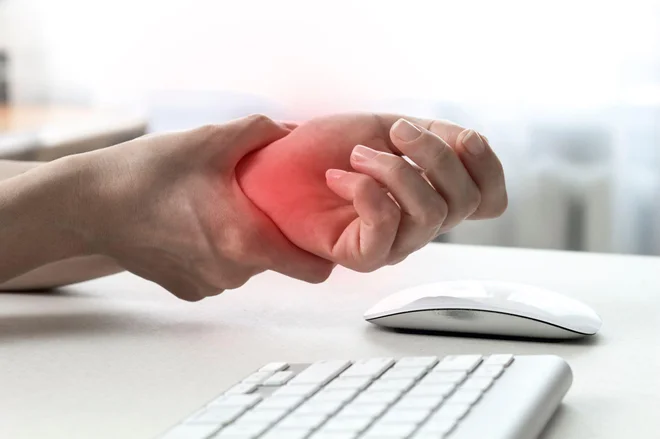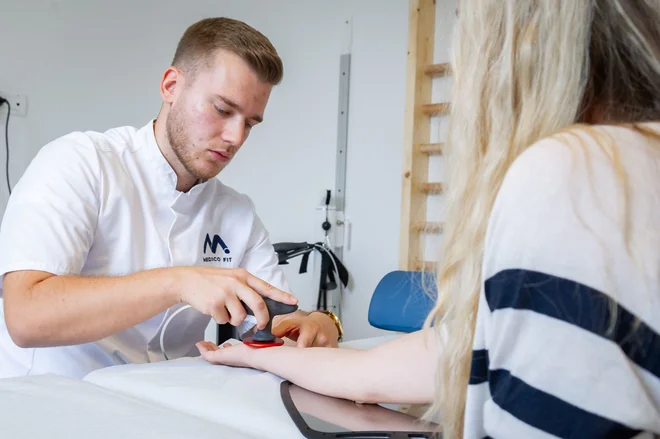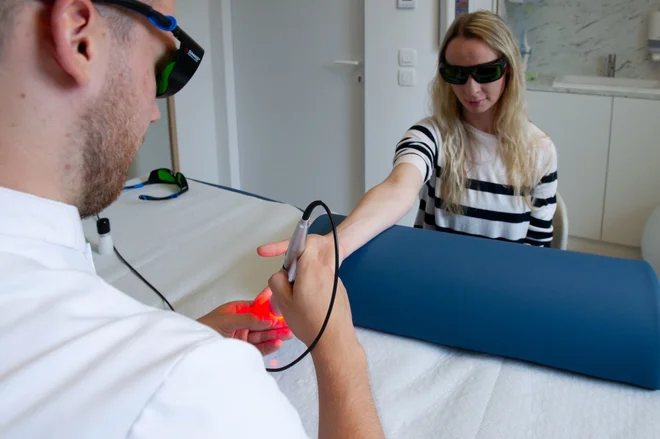What is a carpal channel and how to treat it successfully

Have you repeatedly felt tingling in your fingers, pain in your wrist, or suddenly weakness when you wanted to open a bottle of water, for example? Did you wake up at night for a sense of numbness in your hand? Such symptoms are not uncommon and often indicate a carpal duct syndrome or wrist passage.
What is carpal canal syndrome?
Carpal Channel (Lat. Canalis Carpi) It is a narrow transition to the wrist through which important structures take place, including the median nerve, which revitalizes the thumb, index finger, middle and part of the ring. It is a narrow, rigid channel formed by the wrist bones below and the overlay (transversal carpal ligament) above. When there is pressure on the median nerve inside the carpal duct, we are talking about the carpal canal syndrome – the most common narrowing neuropathy of the upper limb.
This pathology can greatly affect the quality of life of the individual as pain can escalate over time.
Do you suspect that you have a carpal channel syndrome? Subscribe to a physiotherapy specialist for a carpal channel at the Medicofit Clinic.
Why is the treatment of carpal channel syndrome so important?
Photo: Medicofit
Although initial syndromes such as occasional tingling or wrist painthey are not so annoying, which makes many delay a visit to a doctor, the condition can deteriorate quickly and complicate so much that there is no way back. Increased pressure can damage the median nerve, leading to loss of feeling, reduced mobility or even inability to use the hand. In the most difficult cases, some find it difficult to do basic tasks, such as writing, typing, holding a cup, or fastening a button.
Therefore, it is extremely important to seek professional help immediately at the first signs. Rapid action is more likely to recover complete – without surgery.
Causes and risk factors
The carpal canal syndrome is caused by various factors that increase the pressure on the median nerve in this narrow passage. The most common are:
Anatomical changes: Fractures, blowing wrists or arthritis They can change the structure of the wrist passage and reduce the space in the carpal duct, which increases the pressure on the nerve. People with a naturally smaller carpal duct are also more likely to develop syndrome.
Gender: Carpal duct syndrome is more common in women, which can be due to a smaller anatomical space in the wrist or the effects of hormones on tissues in the wrist canal. In women who develop syndrome, the channel is often even smaller than those who have no problems.
Chronic diseases that damage the nerves: Conditions such as diabetes increase the risk of nerve damage, including the median nerve.
Inflammatory diseases: Rheumatoid arthritis, gut and other diseases that cause inflammation can affect the envelopes of the putty in the wrist, thereby further loading the nerve.
Medicines: Some studies have shown a link between the appearance of syndrome and taking some medicines such as anastrozol (medicine for breast cancer treatment).
Obesity: Increased weight is one of the factors that increases the risk of developing syndrome.
Hormonal changes and fluid retention: Liquid retention, often during pregnancy or menopause, can increase the pressure in the wrist channel. The carpal duct syndrome, which occurs in pregnancy, often resolves after childbirth.
Other health problems: States such as thyroid disease, renal failure and lymphedema can also increase risk.
Workplace factors: Long -term work with vibration tools or recurrent movements in which the wrist is often bent can cause an additional load on the median nerve. Working in a cold environment further increases the risk. Such factors can also worsen existing nerve impairment.
Numerous studies have studied the link between the use of the computer and the carpal channel syndrome. Some evidence shows that the use of a mouse may be related to problems, and the use of a keyboard has not been confirmed as a direct risk factor. However, the prolonged use of the computer can cause other forms of pain in the arm that are not necessarily associated with the carpal duct syndrome.
It is important to understand that these factors do not directly cause the carpal canal syndrome, but can increase the likelihood of its development or worsen the situation already present.
Recognizing symptoms is crucial

Photo: Medicofit
Symptoms usually develop gradually, mostly occurring on one hand, but can also develop on both wrists. Typical symptoms include:
- Tingling and numbness in the thumb, index finger, middle and half of the ring. As a rule, the little finger is not affected.
- It also often causes the feeling of going to the fingers of mild electricity or gust, which is especially pronounced among certain activities, such as holding the steering wheel, telephone or newspaper.
- Pain and tingling can spread up from the wrist up the forearm or arm. In order to alleviate problems, many are reflexive “Shake your hands”which can temporarily facilitate feelings.
- Night awakening for pain and numbness.
- Impaired grip: Patients can often start to release objects from their hands. This may be due to reduced sensitivity or weakness of the muscles of the thumb, which are also revived through the median nerve.
- In the advancing phase: muscle atrophy on the thumb side of the palm.
Development of a carpal canal by stages:
Initial phase: Occasionally tingling, especially at night or when using a hand.
Medium phase: More frequent symptoms, reduced grip power.
Progressed phase: Constant numbness, muscle weakness, visible atrophy.
Do not delay with treatment. If you recognize the symptoms described above, subscribe to a physiotherapy specialist as soon as possible at the Medicofit Clinic.
Different methods are used to diagnose the carpal canal syndrome. Neurophysiological examinations, such as electromyography (EMG) and nerve translation measurements, are crucial for confirming the diagnosis and assessing the degree of nerve failure. Physical examination includes tests such as Phalen’s test and Tinel’s sign that can trigger symptoms of syndrome. Ultrasound and magnetic resonance (MRI) are used to visualize the structure of the wrist and determine any anatomical irregularities or inflammation.
Comprehensive treatment of carpal channel syndrome

Photo: Medicofit
At the Medicofit Clinic, they are aware that each case of carpal canal syndrome is different, so they approach diagnostics and treatment individually.
They first perform a thorough diagnostic examination to check whether the symptoms really cause a carpal canal or the problems originate from another area – most often from the cervical spine.
The clinical examination includes an assessment of the mobility of the wrist, the muscle strength of the forearms and the performing of special tests to assess the condition of the median nerve – among the most commonly used Tinel and Phalen’s test.
Numerous studies show that as many as 80 % of persons respond to physiotherapy treatment.
After confirming the diagnosis, a comprehensive therapeutic treatment is followed by a combination of instrumental therapy, manual therapy and kinesiotherapy.
In instrumental therapy, they usually use tecar and laser therapy to help reduce inflammation and irritation of the median nerve. It is also commonly used by impact therapy (ESWT), which has proven to be very effective in many studies – comparable even with injections in the carpal canal.
The most modern physiotherapy devices are an indispensable part of the treatment of the carpal duct, as they promote tissue healing processes, reduce inflammation, improve cellular metabolism and help relieve pain.
Goal manual therapies It is an improvement in the mobility of the wrist and the release of tension in the muscles of the forearm, further relieving the tight nerve. Physiotherapists often recommend patients to wear a brace, which is especially useful for relieving pain at night.
An important part of treatment is also therapeutic exercises that play a key role in recovery as they help strengthen muscles and improve mobility. The first effects of therapy are visible after a few visits, and in severe cases, it will be improved a little later.
In the final phase of treatment is performed kinesiological programaimed at restoring the full functionality of the wrist. Experienced kinesiologists focus on special exercises to strengthen the muscles of the forearms and to learn neurodynamic exercises that improve nerve sliding through the carpal canal. Regular exercise at home is crucial for the long -term improvement of symptoms.
The success of treatment depends on the timely diagnosis, the level of cramping and consistency in rehabilitation. With appropriate non -surgical treatment, most patients can feel a marked improvement after 4-8 weeks. Full elimination of symptoms usually occurs after 8-12 weeks, and in advanced cases rehabilitation can last longer.
An example of successful physiotherapy treatment of carpal duct
The Medicofit Clinic visited 30-year-old hairdresser in Maywho has been facing for months pain and burning feeling in the right wrist. She often felt while working tingling in the first three fingersand occasionally happened to her that because of the loss of power omitted some object out of hands. Increasingly, during his haircut, reduced control began to notice and faster tired muscle wrist muscles.
Due to the nature of the work that requires precision and long -term use of her hands, Mrs. Maja began to worry that she should be temporarily or even permanently abandoning the profession. Physiotherapy examination has confirmed these symptoms and further revealed reduced muscle strength and Increased tension in certain muscle groups forearm. Special orthopedic tests have confirmed the presence of a carpal canal problem.
Based on the history and findings of the clinical examination, it was performed A comprehensive 12-week physiotherapy treatment programwhich included Summus laser therapy, EMS Dolorclast striking waves, sixtus ultrasound cryotherapy, and manual soft tissue release techniques. They also included in the healing process Individually tailored to therapeutic exercises To improve the mobility of the median nerve and for strengthening the musculature.
Mrs Maja reported to improve symptoms after five weeks. They fully resolved before the end of treatment. Medicofit Clinic specialists also advised Maji on preventive action, the adjustments of the work environment and the importance of performing regular therapeutic exercises.

Photo: Medicofit
When conservative treatment is not enough
In more severe cases, when nerve compression is so pronounced that muscle atrophy in the thumb area occurs, or when conservative approaches do not bring sufficient improvement, surgery is required – carpal canal decompression. It is a short surgery that takes about 10 to 15 minutes.
Even after surgery is Physiotherapy rehabilitation necessary as it prevents complications such as scarring, which can again cause a nerve to be tight. At least 10-week structured rehabilitation is recommended, which allows optimal healing and return to everyday activities as quickly as possible.
The carpal canal syndrome is curable if it is recognized in a timely manner. With modern diagnostic methods and individualized physiotherapy treatment as offered by the Medicofit Clinic, most patients can achieve a complete recovery without surgery. Subscribe to physiotherapy treatment of carpal duct.
Medicofit is a subscriber







